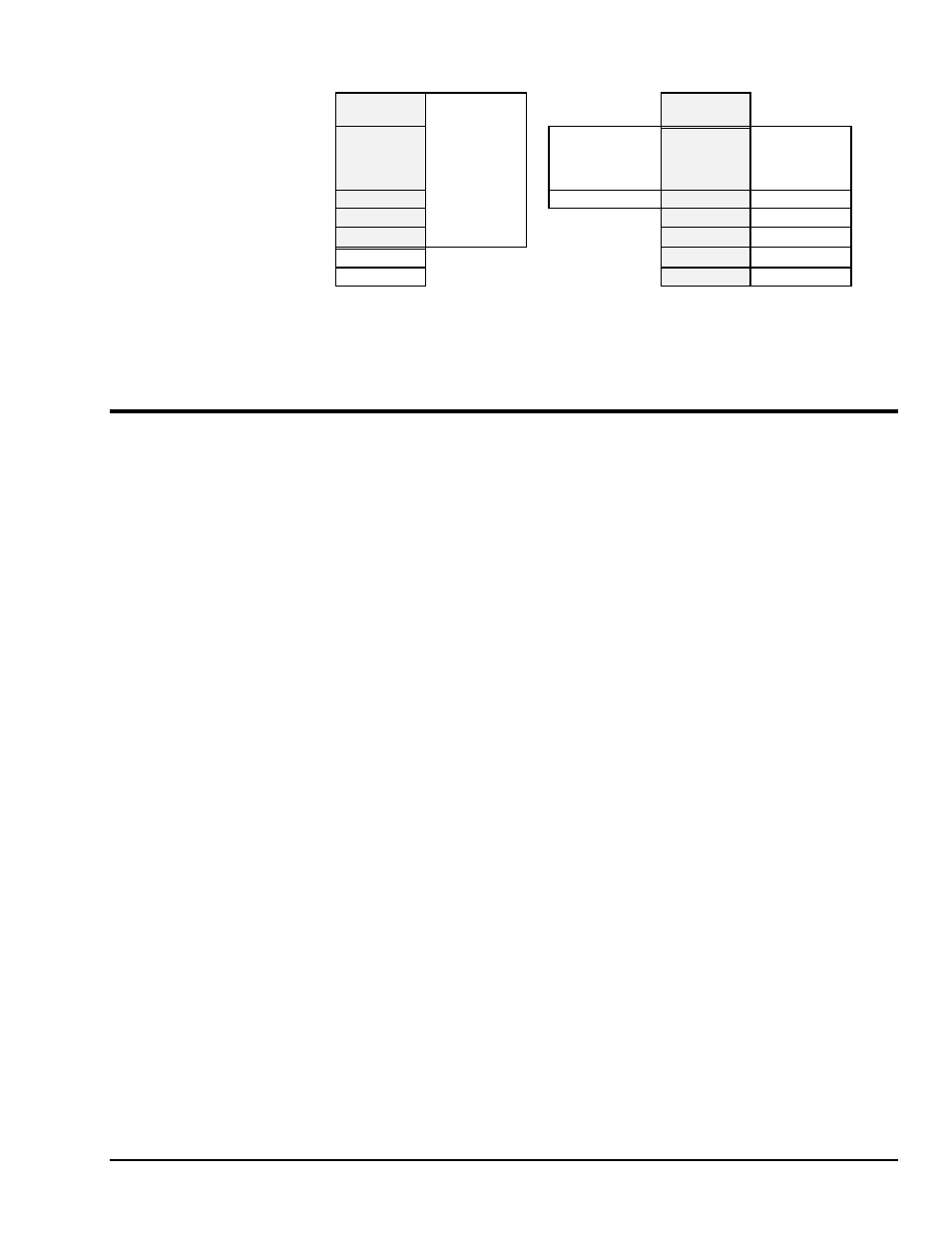High/low/last (hll) registers, Contents of the hll registers – Measurement Computing TempScan/1100 User Manual
Page 103

TempScan / MultiScan User's Manual
889897
System Operation 5-13
Buffer
Buffer
Read Pointer >
Block 1
Trigger Blocks
1 through 5
Write Pointer >
Block 1 to 7
Block 2
No
longer
accessible
Block 2 to 1
Trigger Blocks
2 through 7
renumbered to
1 through 6
Block 3
Block 3 to 2
Block 4
Read Pointer >
Block 4 to 3
Write Pointer >
Block 5
Block 5 to 4
N/A
Block 6 to 5
End of Buffer >
N/A
End of Buffer >
Block 7 to 6
(1) The Write Pointer advances as scans are
collected while the Read Pointer advances
as scans are read from the buffer.
(2) After 3 Trigger Blocks, the Read Pointer has
advanced to Block 4 while the Write Pointer has
advanced to the start of the buffer (erasing the
oldest Trigger Block and renumbering the Blocks).
Buffer Overrun – Multiple Trigger Blocks
High/Low/Last (HLL) Registers
Other than reading the Acquisition Buffer, accessing the High/Low/Last (HLL) Registers is an alternative
method of getting channel data from the TempScan/1100 or MultiScan/1200 system. Independent of the
triggering and scan-interval configuration for an acquisition, the HLL Registers are constantly updated with
new values during the acquisition, at the following rates: At the maximum scan rate, for the
TempScan/1100; and at any current programmed scan rate up to the maximum scan rate, for the
MultiScan/1200. At any time, the HLL Registers can be queried for channel values without affecting the
buffered data.
The minimum requirement for activating the HLL Registers is to configure the desired channel(s) in the
scan, using the Configure Channels (
C
) command. Those channels not included in the channel scan do not
have to be configured. Meanwhile, the returned scan data will be in the desired data format – Engineering
Units, Binary, or ASCII Counts – that you have defined, using the Set Data Format (
F
) command.
Contents of the HLL Registers
The High/Low/Last (HLL) Registers contain and return, when requested, the following information for each
configured channel:
*0 The High Reading for the channel since the beginning of the current acquisition or since the last HLL
query – Query and clear the current High/Low/Last (
U5
).
*1 The Time/Date Stamping of the High Reading.
*2 The Low Reading for the channel since the beginning of the current acquisition or since the last HLL
query – Query and clear the current High/Low/Last (
U5
).
*3 The Time/Date Stamping for the Low Reading.
*4 The Last or most recent Reading for the channel.
To initiate HLL updating it is only necessary to configure the desired channel(s). The HLL Registers will
only be updated for those channels configured, and you may only access the HLL Registers for the
configured channels. You can clear the High and Low readings for each configured channel in any of the
following ways:
• Powering on the TempScan/1100 or MultiScan/1200.
• Issuing a new channel configuration.
• Clearing the readings explicitly by command (as discussed in the following text).
Note: When the High and Low values are cleared, their associated Time/Date Stamps are also
cleared. After being cleared, the new High and Low values (along with their associated
Time/Date Stamping) will be initialized on the next updating of the HLL Registers.
